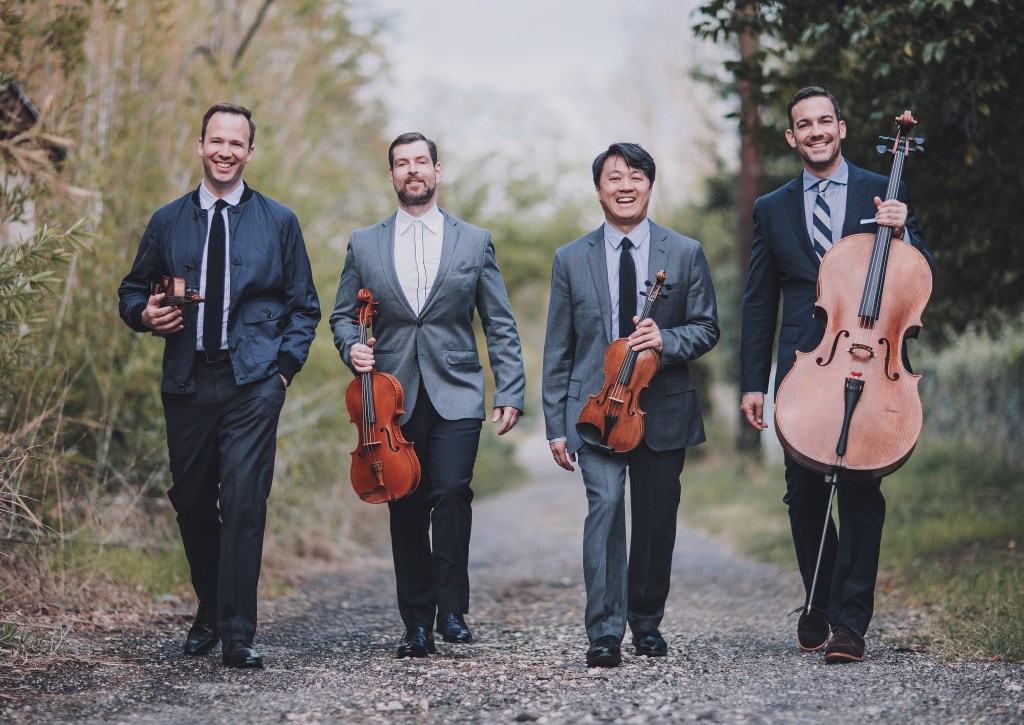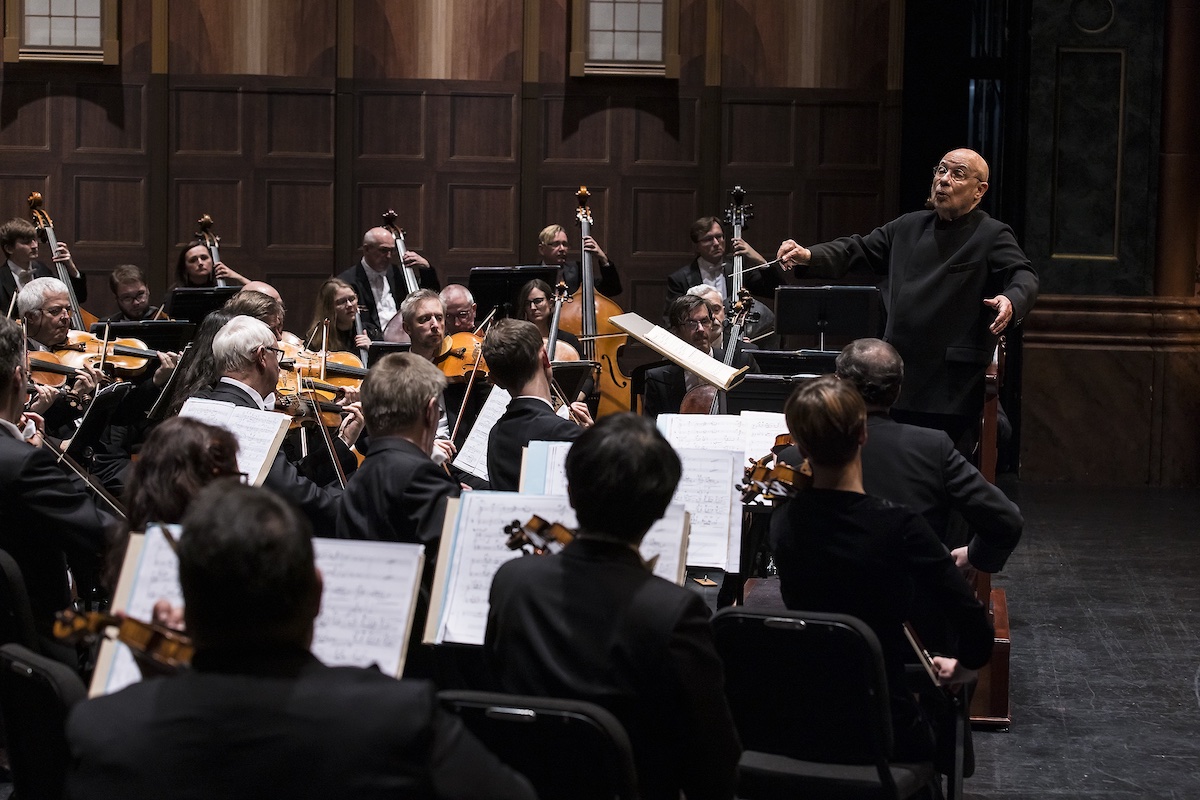This edition of ON the Beat was originally emailed to subscribers on February 23, 2023. To receive Josef Woodard’s music newsletter in your inbox each Thursday, sign up at independent.com/newsletters.
Internationalism was alive in the well in our far western outpost last week. On screens about town, the 38th annual Santa Barbara International Film Festival served up a strong 10-day platter of films from around the globe, most of which wouldn’t otherwise have been available to us on the proper big screen format.
And in the midst of SBIFF’s splendor, some of us hopeless cinephiles had to peel away from the festival’s flow to partake of another worldly cultural tradition in Santa Barbara, CAMA’s “International Series.” Orchestral fans hereabouts long indebted to CAMA’s long-standing hosting of celebrated orchestras from Europe and beyond, took on a Czech mission and musical plan when the Filharmonie Brno Philharmonic came to town with its impressive sound and all-Czech programming scheme.
With roots going back to the 1870s, this orchestra out of Brno — the second-largest city in the Czech Republic — is a stellar ensemble, currently led with a firm but flexible hand by American-born but often Europe-based conductor Dennis Russell Davies. Their Granada appearance was a fine and rewarding example of a touring international orchestra venturing out into the world, proudly proffering musical fruits from home — by Bohuslav Martinů, Leoš Janáček, and the ever-popular Antonin Dvorak (with his rarely-played Symphony No. 6)
Apart from Dvorak, of “New World Symphony” fame, music of these Czech composers shows up rarely enough on concert stages in America, and especially Santa Barbara, that the music landed freshly on the collective ear here. A bold Czech character rang through, enriched by a particular charm and rugged fervor.
With the west coast reference of La Jolla-based commission, Martinů’s Sinfonietta “La Jolla” opened the concert in luminous style, at once accessible and adventurously left of tonal expectations. The 1950 piece, for chamber orchestra and piano, isn’t quite a piano concerto, but includes showcase moments for piano — here, played assuredly by Maki Namekawa (Davies’ wife). A slightly mystical air arrives in the Largo movement, as the piano part is at polytonal odds with the orchestra, building to and through a briefly cacophonous mass, into a lyrical passage. Celebratory flair marks the finale, but again with a restlessly wandering sense of key.
To these ears, this Monday evening’s prized centerpiece came from Janáček, who lived in Brno and in fact helped found the early incarnation of this orchestra. Janáček’s notable and gripping work Taras Bulba, rhapsody for orchestra, is based on Gogol’s novella, and carries with it an implied narrative quality in the structure. From the first movement, with its sharp dynamic contrasts and juxtapositions of consonant themes and their “evil” twins, we recognize the winds of modernity informing this piece, premiered in Brno in 1921. But the impression shifts between modernism and sweet Czech rusticity, thickening the musical plot to enticing degrees.
By the end, an almost subversively protracted resolution shows up, after the mercurial matters leading up to the finale. Taras is a fascinating and characterful score, played with all due precision and vigor, and a certain fiery Slavic abandon, to suit where needed. State Street was a doubly worldly place on that Monday night, on stage and on screens.
Down in the Chamber Chamber

Meanwhile, a block away from the grandeur of the Granada, but semi-secretly tucked away in the Santa Barbara Museum of Art’s intimate Mary Craig Auditorium, the museum’s long-cherished chamber music chamber springs back to action next Thursday, March 2. String quartet music of a high order has been the mainstay in this concert series, continuing with the Miró Quartet, formed in 1995 and based in Austin, Texas.
Among their awards are wins at the Naumburg Chamber Music Competition and an Avery Fisher Career Grant. On the recording front, the Miró ambitiously took on the complete Beethoven Quartets — eight, count ’em, hours’ worth — released in 2019.
Interestingly, in addition to inclusion of quartet repertoire staples Haydn and Dvorak, the Miró’s program here serendipitously joins the unofficial recent celebration of music in Santa Barbara by contemporary composer Carolyn Shaw, whose “Microfictions” is on the SBMA slate. Shaw’s music was central in last summer’s Sō Percussion concert at the Music Academy and is featured in the fast approaching March 5 concert by the Attaca Quartet at Hahn Hall, featuring Shaw’s Entr’acte, Evergreen. Shaw, or at least her music, is on the town. And that’s entirely a good thing.
On Wednesday, March 1, the acclaimed and forward/backward-thinking pianist Conor Hanick is providing Santa Barbarans from the South County an over-ripe excuse to head over the 154 to Los Alamos. Hanick, a starring faculty member of the Music Academy of the West, who gave moving, mystical performances of Hans Otte’s Book of Sounds both at the Ojai Music Festival last summer and in MAW’s Hahn Hall last fall, is appearing in the Santa Ynez Valley Concert Series for a solo recital.
There, in the inviting ambience of St. Marks-in-the-Valley church, Hanick will perform an enticing program of Beethoven, Ligeti, Berg and the Russian composer deserving wider recognition Galina Ustvolskaya (1919-2006). Ustvolskaya’s music was one of the showcase features of Ojai Music Festival in 2018, when violinist Patricia Kopatchinskaja was at the artistic director helm. It should be a hot, thought-provoking Wednesday night in Los Alamos.





You must be logged in to post a comment.